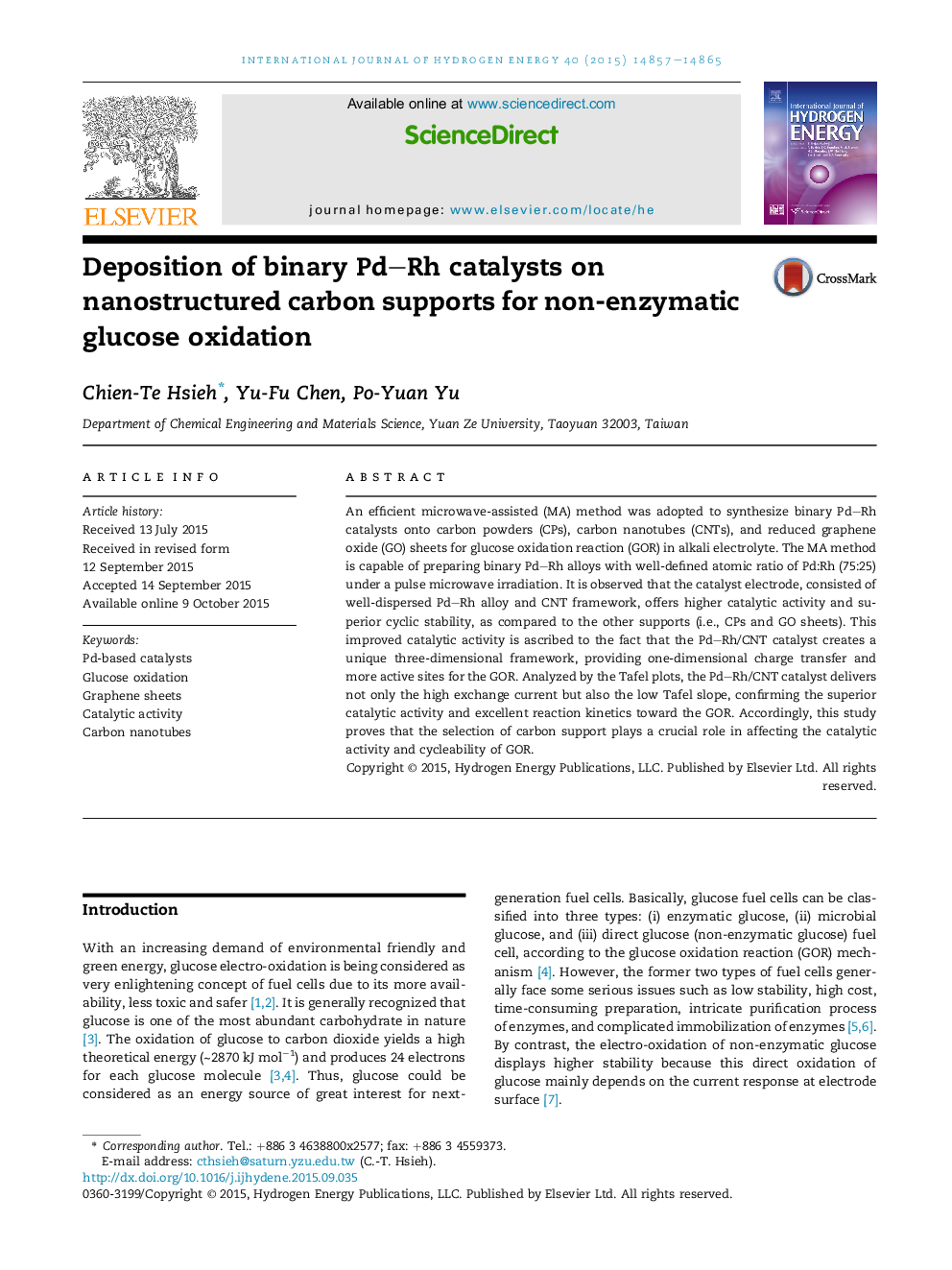| Article ID | Journal | Published Year | Pages | File Type |
|---|---|---|---|---|
| 1274255 | International Journal of Hydrogen Energy | 2015 | 9 Pages |
•Microwave-assisted method was adopted to synthesize binary Pd–Rh catalysts.•Carbon powders, carbon nanotubes, and graphene oxide sheets serve as support.•The glucose oxidation reaction on Pd–Rh catalysts occurs in alkali electrolyte.•The Pd–Rh catalyst offers higher catalytic activity and superior cyclic stability.•This improved activity is ascribed to the creation of three-dimensional framework.
An efficient microwave-assisted (MA) method was adopted to synthesize binary Pd–Rh catalysts onto carbon powders (CPs), carbon nanotubes (CNTs), and reduced graphene oxide (GO) sheets for glucose oxidation reaction (GOR) in alkali electrolyte. The MA method is capable of preparing binary Pd–Rh alloys with well-defined atomic ratio of Pd:Rh (75:25) under a pulse microwave irradiation. It is observed that the catalyst electrode, consisted of well-dispersed Pd–Rh alloy and CNT framework, offers higher catalytic activity and superior cyclic stability, as compared to the other supports (i.e., CPs and GO sheets). This improved catalytic activity is ascribed to the fact that the Pd–Rh/CNT catalyst creates a unique three-dimensional framework, providing one-dimensional charge transfer and more active sites for the GOR. Analyzed by the Tafel plots, the Pd–Rh/CNT catalyst delivers not only the high exchange current but also the low Tafel slope, confirming the superior catalytic activity and excellent reaction kinetics toward the GOR. Accordingly, this study proves that the selection of carbon support plays a crucial role in affecting the catalytic activity and cycleability of GOR.
